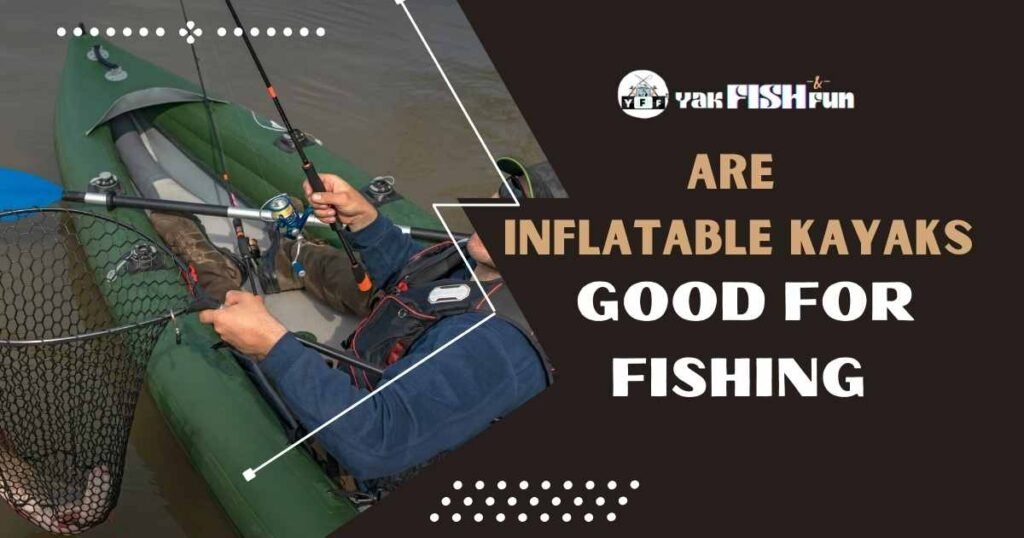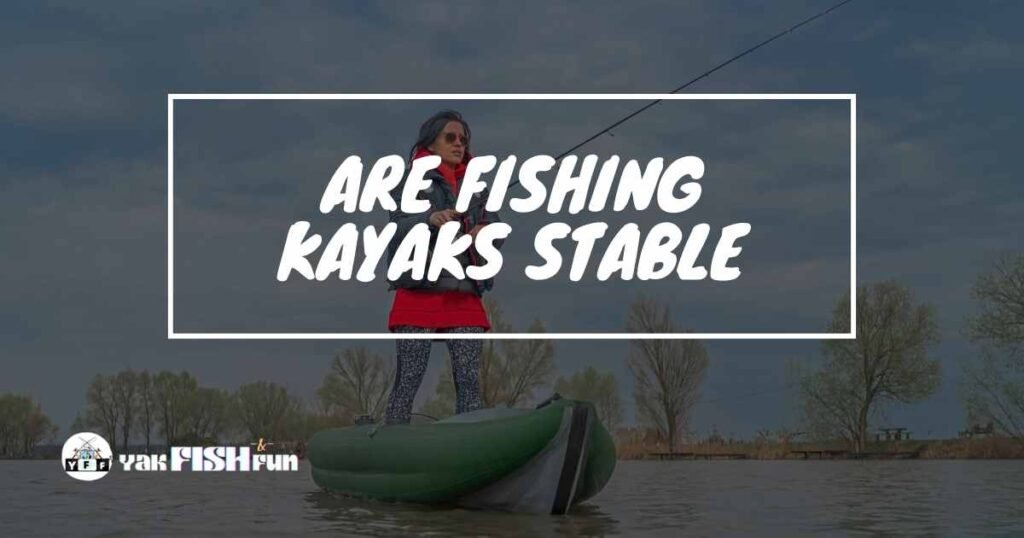Kayak fishing is a dynamic and immersive way to engage with the great outdoors while pursuing your passion for angling. For beginners, it offers a welcoming entry point into the world of fishing, blending the serenity of kayaking with the thrill of hooking a catch.
But have you ever found yourself spending hours on your kayak, casting your line into the water, only to come back empty-handed? It can be frustrating and demoralizing, leaving you wondering what went wrong. Well, here’s a secret that experienced kayak anglers know: understanding fish habitats and behavior is the key to successful fishing adventures.
Knowledge truly is power. Gaining insights into fish activity and behavior can significantly improve your chances of reeling in that prized catch. But why is this understanding so important? It’s simple – fish have their preferences and patterns. By unraveling these mysteries, you can make informed decisions about where and how to fish.
We’ll dive into the benefits of studying fish habitats for avid anglers like yourself. From coastal waters to inland lakes, we’ll discuss underwater structures, water conditions, and feeding patterns that shape your angling journey. So grab your paddle holders and uncover the secrets that will take your kayak fishing game to new heights!
Table of Contents

Fish Habitats and Behavior For Kayak Anglers
For successful kayak fishing, understanding fish habitats and behavior is essential. Knowing where to find different fish species and how they behave can greatly improve your chances of a productive fishing experience.
Bass
Bass are one of the most sought-after fish species by kayak anglers due to their aggressive nature and challenging fight. They prefer freshwater environments such as lakes, rivers, and ponds with structures like submerged trees or rocks. When targeting bass, look for areas with vegetation or drop-offs where they tend to hide. Using lures like plastic worms or crankbaits can be effective in enticing them to bite.
Redfish
Redfish, also known as red drum, are commonly found in coastal waters along the Atlantic coast and Gulf of Mexico. They thrive in shallow marshes, flats, and estuaries. Look for signs of feeding activity, such as tailing or “pushing” water, as they search for food on the bottom. Live bait like shrimp or artificial lures resembling small crabs works well when targeting redfish from a kayak.
Grouper
Grouper are large predatory fish found in both saltwater and freshwater environments. In coastal waters, they often inhabit rocky ledges or wrecks where they can ambush their prey. When targeting grouper from a kayak, consider using live bait such as mullet or pinfish near these underwater structures. Keep in mind that landing a grouper requires sturdy tackle due to its size and strength.
Trout
Trout fishing from a kayak offers an exciting challenge for anglers. These elusive fish prefer clear streams, rivers, or lakes with cool water temperatures. Look for areas with submerged structures like fallen trees or rock formations where trout tend to seek shelter and feed. Using different lures, such as spinners, spoons, or flies, can help entice them to strike.
Fish Behavior and Feeding Habits
Understanding fish behavior and feeding habits is crucial for successful kayak fishing. Different species have unique patterns and preferences that can guide your fishing plans. Some fish are more active during specific times of the day or year, while water conditions or seasonal patterns influence others. Observing their behavior and adapting your techniques accordingly will increase your chances of a catch.
Targeting Specific Species
When targeting specific fish species from a kayak, it’s important to consider their preferred habitats and feeding habits. Use this valuable information to position yourself in the perfect fishing spot. Pay attention to underwater structures, such as reefs or submerged vegetation, which attract various species. Adjust your bait selection and presentation based on the target species’ preferences.
Tips for Successful Catching
To maximize your success rate, keep these tips in mind when kayak fishing for popular fish species:
- Research the specific areas known for hosting the target species.
- Choose appropriate baits or lures that mimic their natural prey.
- Pay attention to tension on your line, as it may indicate a bite.
- Be patient and observant; look out for signs of fish activity like splashing or jumping.
How does Understanding fish behavior boost your fishing experience?
For people who like fishing, knowing how fish behave is really important. But it becomes super important when you can use that knowledge to make your fishing better. It helps you catch more fish and be more successful overall.
locate Bass Hideouts by understanding habitat preferences
One great thing about knowing where fish live and how they act is that you can find good places to fish. When you understand what kind of places each type of fish likes, you can look in those spots and have a better chance of finding them.
Here’s what you need to consider:
- Bass tend to hide around structures such as fallen trees or submerged rocks.
- Trout prefers cold, oxygen-rich waters with plenty of cover.
- Catfish are often found near underwater structures like deep holes or ledges.
Observing these habitat preferences lets you plan your kayak fishing trips accordingly. This knowledge allows you to confidently navigate the waters, increasing your chances of finding active fish.
Understanding feeding patterns to increase catch rates while kayak fishing
Knowing how fish eat is also really helpful to catch more fish. Different types of fish eat in their own special ways, and this is affected by things like the weather, how warm the water is, and what time of day it is. By analyzing these patterns, you can adjust your techniques and bait choices accordingly:
- In warmer months, topwater lures are effective for targeting bass during their active feeding times.
- During colder seasons or early mornings, using slow-sinking lures can entice trout to hide near the bottom.
- Watching which way the wind is blowing can tell you where little fish that bigger fish like to eat might be pushed by the water movement. This can help you find the hungry predator fish.
Changing how you fish to match how the fish are eating will make you much more likely to catch fish when you’re out kayaking.
Adapting techniques based on seasonal changes in fish behavior for better results
Fish do different things at different times of the year because of the changing seasons. This is really important for people who fish from kayaks to know. When you understand how fish act in different situations, you can change how you fish to match what they’re doing.
- During spawning seasons, fish tend to gather in specific areas, making them easier to target.
- In colder months, fish may become less active and prefer slower presentations.
- When the weather is changing, it can affect how fish act. Some kinds of fish might get more active just before a storm arrives.
To make your kayak fishing more enjoyable and catch more fish, it’s important to learn about how fish change their habits during different seasons. Then, you can change how you fish to improve your chances of success.
Improving overall angling skills by observing how factors influence fish habits
Watching how different things affect how fish behave can help you get better at fishing. When you pay attention to things like how clear the water is, how fast the water is moving, and how deep it is, you can get better at fishing:
- Trying out different fake baits and ways to fish helps you figure out what works best in specific situations.
- Changing how you throw your line into the water can help you find the best way to catch fish in a particular spot.
- Using tools like sonar that help you see underwater can tell you where fish are and what the underwater area looks like.
By continuously learning from each fishing adventure and applying this knowledge in future trips, you will develop a stronger connection with the waters and improve your chances of success.
Understanding fish habitats and behavior is essential for successful kayak fishing.
Tips for Top Fish Species for Kayak Fishing
Fishing from a kayak is a fun and exciting way to catch fish, and it lets you get really close to the water. But here’s the thing: different kinds of fish like to do different stuff and like different things. So, it’s a good idea to know some special tricks for each type of fish when you’re kayak fishing.
So, let’s dive in and discover the secrets to successful kayak fishing for each fish species!
Bass
Understanding the behavior and habitats of different fish species is crucial for a successful outing. Let’s dive into specific tips for each fish species, starting with bass.
Bass are one of the most popular fish targeted by kayak anglers. They can be found in various water bodies such as lakes, rivers, and ponds. Understanding their behavior and preferred habitats will greatly increase your chances of reeling in a trophy catch.
- Behavior and Habitat: Bass tend to hide around structures like fallen trees, rocks, or weed beds. Look for these areas when kayaking and casting your line.
- Feeding Patterns: Bass are known to be opportunistic feeders. They often ambush their prey by hiding and striking suddenly. Use lures that mimic their natural food sources, like frogs or small baitfish.
- Seasonal Movements: During warmer months, bass seek cooler waters near deeper sections of lakes or rivers. In colder months, they move to shallower areas where the water is warmer.
- Best Bait and Lures: Topwater lures as buzzbaits or poppers work well during early morning or evening when bass are more active on the surface. Soft plastic worms or jigs can be effective throughout the day.
Trout
Trout are a fish that lots of people really like to catch when they’re fishing from a kayak. They’re tricky to catch but taste great. If you want to be more likely to catch a trout while kayaking, think about these tips:
- Behavior and Habitat: Trout prefer cold, clear streams with plenty of oxygen-rich water. Look for pools, riffles, or undercut banks where they may hide.
- Feeding Patterns: Trout are known to be selective feeders. Match the hatch by using flies that imitate insects present in their environment.
- Seasonal Movements: Trout tend to move upstream during spawning seasons. They seek cooler waters in deeper pools or shaded areas in warmer months.
- Best Bait and Lures: Fly fishing with dry flies, nymphs, or streamers is a popular technique for trout. Spinners or small spoons can also be effective.
Catfish
Catfish are known for their size and strength, making them an exciting target for kayak anglers. To increase your chances of hooking a catfish from your fishing kayak, keep the following tips in mind:
- Behavior and Habitat: Trout prefer cold, clear streams with plenty of oxygen-rich water. Look for pools, riffles, or undercut banks where they may hide.
- Feeding Patterns: Trout are known to be selective feeders. Match the hatch by using flies that imitate insects present in their environment.
- Seasonal Movements: Trout tend to move upstream during spawning seasons. They seek cooler waters in deeper pools or shaded areas in warmer months.
- Best Bait and Lures: Fly fishing with dry flies, nymphs, or streamers is a popular technique for trout. Spinners or small spoons can also be effective.
By tailoring your fishing techniques to specific fish species when kayak fishing, you’ll greatly enhance your chances of success on the water.
Bottom Line
Understanding fish habitats and behavior is the key to successful kayak fishing. By gaining knowledge about different fish species, their preferred habitats, and behaviors, you can significantly enhance your fishing experience. Armed with this information, you’ll be able to target specific species more effectively and increase your chances of a rewarding catch.


